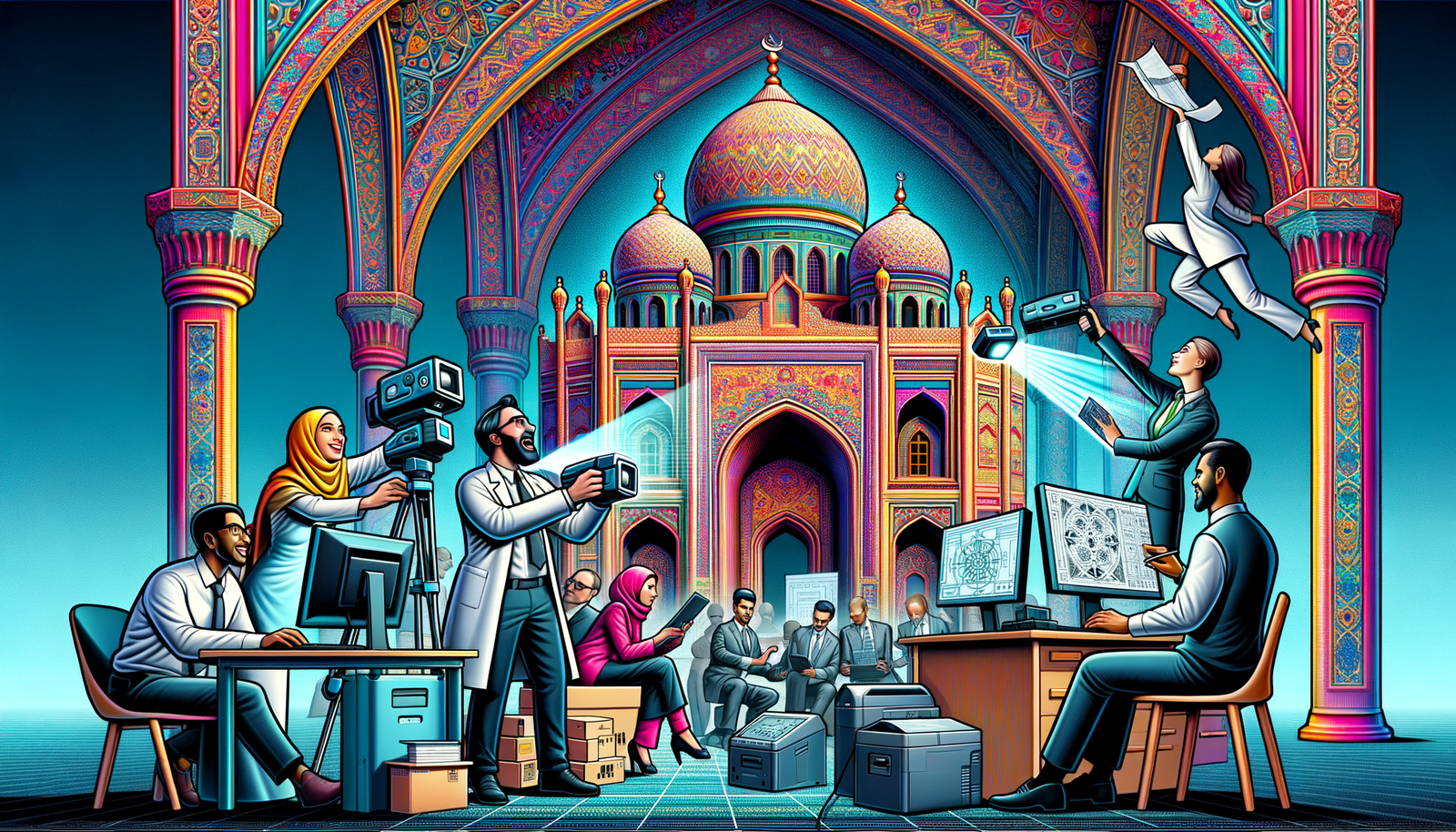Your Cart is Empty
Customer Testimonials
-
"Great customer service. The folks at Novedge were super helpful in navigating a somewhat complicated order including software upgrades and serial numbers in various stages of inactivity. They were friendly and helpful throughout the process.."
Ruben Ruckmark
"Quick & very helpful. We have been using Novedge for years and are very happy with their quick service when we need to make a purchase and excellent support resolving any issues."
Will Woodson
"Scott is the best. He reminds me about subscriptions dates, guides me in the correct direction for updates. He always responds promptly to me. He is literally the reason I continue to work with Novedge and will do so in the future."
Edward Mchugh
"Calvin Lok is “the man”. After my purchase of Sketchup 2021, he called me and provided step-by-step instructions to ease me through difficulties I was having with the setup of my new software."
Mike Borzage
Revolutionizing Design with 3D Scanning: Transforming Real-World Geometries into Digital Models
October 24, 2024 6 min read


Introduction to 3D Scanning
3D scanning is a transformative technology that captures the physical dimensions of an object or environment, translating real-world geometries into digital models. This process involves collecting data on the shape and appearance of objects, which is then used to create precise digital representations. The advent of 3D scanning has revolutionized various industries by providing a means to digitize physical elements with remarkable accuracy. There are several types of 3D scanners, each utilizing different technologies to capture data. Laser scanners emit laser beams to measure the distance to the surface of an object, while structured light scanners project patterns onto the object and analyze the deformation of the patterns to determine shape. Other methods include photogrammetry, which uses photographs from multiple angles to reconstruct a 3D model, and time-of-flight scanners that calculate distances based on the time it takes for light to reflect off an object. The importance of 3D scanning in design and engineering fields cannot be overstated. It enables professionals to create detailed models for analysis, simulation, and visualization, bridging the gap between physical and digital realms. By capturing intricate details of objects and environments, 3D scanning facilitates enhanced precision in product development, quality control, and customization. The ability to seamlessly integrate scanned data into CAD software streamlines workflows and accelerates innovation across various sectors.
Applications of 3D Scanning in Various Industries
The versatility of 3D scanning technology has led to widespread adoption across multiple industries, each leveraging its capabilities to improve processes and outcomes. In product design and development, 3D scanning plays a critical role in creating accurate CAD models from existing physical objects. Designers and engineers can digitize prototypes, components, or even entire assemblies to analyze and modify designs efficiently. This approach allows for rapid prototyping and iterative design processes, where modifications can be tested digitally before committing to physical production. By using scanned data, teams can ensure that every aspect of the design aligns with specifications and functional requirements.
In the realm of cultural heritage and restoration, 3D scanning serves as a powerful tool for documenting and preserving historical artifacts and sites. It enables the creation of detailed digital archives that capture the exact geometry and texture of culturally significant objects, which is invaluable for restoration efforts and educational purposes. The role of 3D scanning in preservation efforts extends to the reconstruction of damaged artifacts, allowing historians and conservators to restore pieces with a high degree of accuracy. Furthermore, digitized models can be shared globally, providing access to cultural treasures without the risks associated with handling delicate originals.
The manufacturing and quality control sector utilizes 3D scanning for precision measurement and inspection of parts and products. By comparing scanned models to design specifications, manufacturers can detect discrepancies and defects at an early stage, ensuring products meet quality standards. This process, known as dimensional inspection, helps in maintaining consistency and reduces waste. Additionally, 3D scanning is integral to reverse engineering efforts, where existing parts are digitized to create CAD models for replication or optimization. This is particularly useful when original design documentation is unavailable, allowing for the recreation of components and the opportunity to enhance their design for improved performance or manufacturability.
The Reverse Engineering Process
Reverse engineering through 3D scanning involves several critical steps that transform a physical object into a digital model suitable for analysis and reproduction. The process begins with data capture, where the object is scanned using appropriate technology to collect detailed surface geometry. Techniques such as proper positioning, multiple scanning angles, and calibration are essential to ensure comprehensive data acquisition. During this phase, best practices include minimizing environmental interferences, such as vibrations and lighting variations, which can affect scan quality.
Following data capture is the data processing stage, where raw scan data is converted into usable CAD files. This involves cleaning up the scan by removing noise and artifacts, aligning multiple scans if necessary, and generating a mesh or point cloud that accurately represents the object's geometry. Advanced software tools are used to interpolate missing data, refine details, and sometimes simplify complex geometries for practical use. The result is a digital model that can be manipulated within CAD programs for various applications.
The applications of reverse engineering are vast, encompassing redesign and innovation efforts across industries. Engineers can analyze the scanned models to understand the underlying design principles of a component, identify potential improvements, and integrate new features. This process is instrumental in product development cycles where innovation is driven by enhancing existing designs. It also facilitates compatibility and interoperability studies, where new parts must fit precisely with existing systems.
However, the reverse engineering process comes with its own set of challenges and considerations. Ensuring accuracy is paramount, as any deviations in the scan can propagate errors in the final model. Managing noise in scan data requires careful filtering without losing critical details. Furthermore, intellectual property concerns and ethical considerations must be addressed, particularly when reverse engineering existing products. It's essential to respect patents and design rights, and to use reverse engineering ethically, focusing on legitimate purposes such as interoperability, education, and innovation rather than duplication without authorization.
Future Trends in 3D Scanning and Reverse Engineering
Advancements in 3D scanning technology continue to push the boundaries of what is possible, heralding a future where these tools become even more integral to design and engineering processes. One significant trend is the development of more portable and faster scanning devices. Handheld scanners and devices that attach to tablets or smartphones are making 3D scanning more accessible, enabling on-site data capture without the need for bulky equipment. These improvements in portability and speed allow for real-time scanning and immediate feedback, streamlining workflows and reducing the time between data capture and utilization.
The integration of 3D scanning with emerging technologies like augmented reality (AR), artificial intelligence (AI), and machine learning is another trend shaping the future. AR can enhance the scanning process by overlaying guidance and feedback during data capture, improving accuracy and user experience. AI and machine learning algorithms are being employed to automate data processing tasks, such as noise reduction and feature recognition, leading to more efficient transformation of raw scan data into usable models. These technologies can also predict and correct errors, optimize meshes, and even generate textures for more realistic models.
The potential impact of 3D scanning on future design processes is profound. As scanners become more integrated with design software, the line between physical and digital design spaces will blur further. Designers and engineers will be able to manipulate scanned objects in virtual environments, fostering enhanced creativity and exploration. This seamless integration will enable rapid prototyping cycles, where physical and digital iterations inform each other in real-time. Additionally, the democratization of 3D scanning technology will empower a broader range of professionals and enthusiasts to contribute to design innovation, leading to a more collaborative and interconnected design community.
Conclusion
In summary, 3D scanning and reverse engineering are pivotal technologies that have reshaped modern design and manufacturing landscapes. They offer unparalleled precision and efficiency in capturing the complexities of physical objects, enabling accurate digital modeling and analysis. By bridging the gap between the physical and digital worlds, these technologies enhance the capabilities of designers and engineers, fostering innovation and improving product quality. The use of 3D scanning in various industries—from product development to cultural preservation—highlights its versatility and significance.
As we look toward the future, it's clear that embracing 3D scanning and reverse engineering will be essential for professionals aiming to stay at the forefront of their fields. Leveraging these technologies unlocks new avenues for creativity, optimization, and problem-solving. Designers and engineers are encouraged to integrate 3D scanning into their workflows to harness its full potential, benefitting from increased precision and the ability to iterate more effectively.
The role of design software is integral in facilitating advanced scanning techniques and applications. Continuous developments in software capabilities will further simplify the process of turning scanned data into actionable insights. As software becomes more intuitive and powerful, it will lower barriers to entry and enable more users to take advantage of 3D scanning technologies. This synergy between hardware and software advancements promises an exciting era of innovation, where the only limits are those of imagination and ingenuity.
Also in Design News

Revolutionizing Telecommunications: The Rise of Advanced Design Software
August 31, 2025 16 min read
Read More
Cinema 4D Tip: Optimizing 2D Matte Integration with Projection Man in Cinema 4D
August 31, 2025 3 min read
Read MoreSubscribe
Sign up to get the latest on sales, new releases and more …



